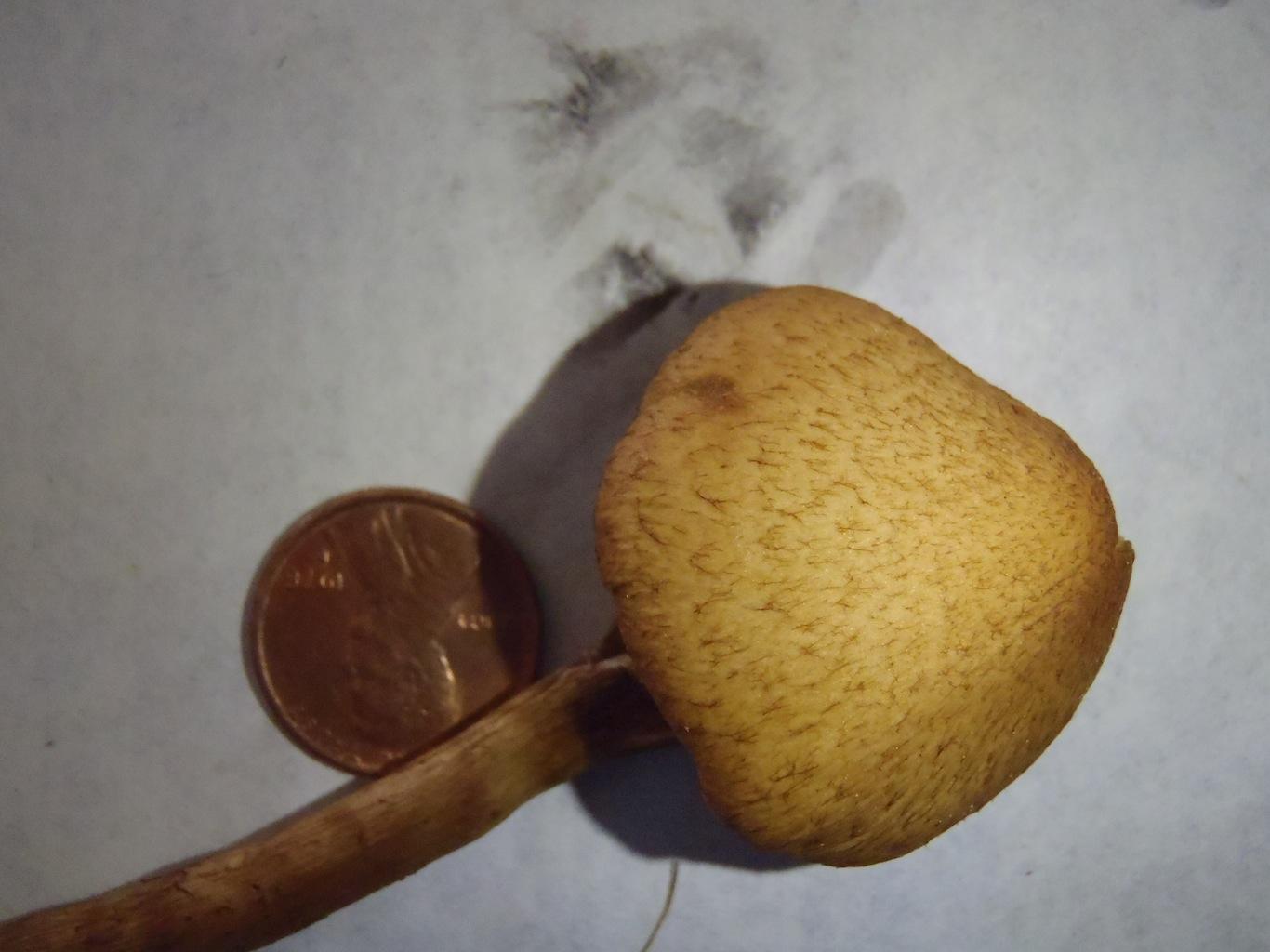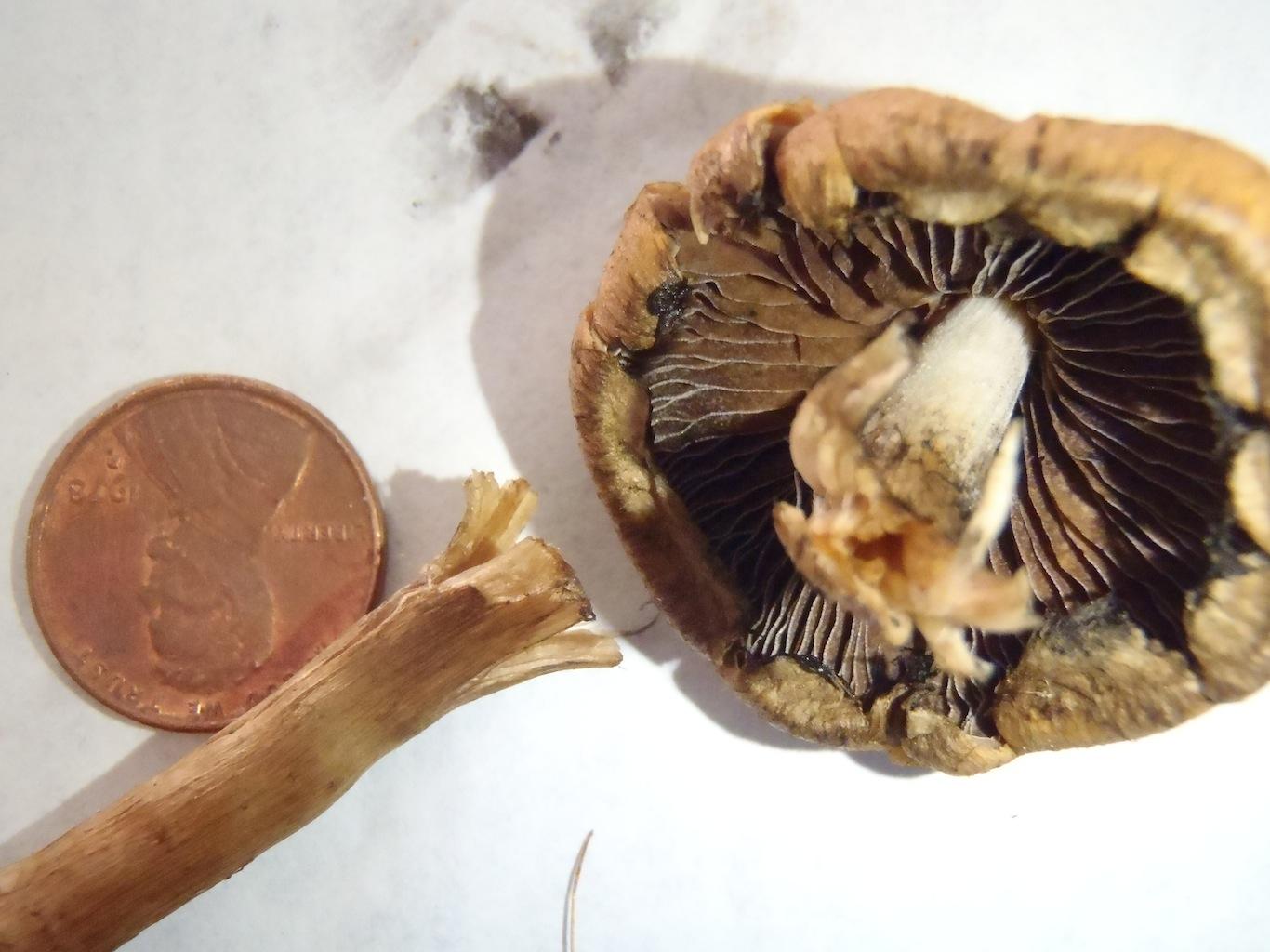Lacrymaria lacrymabunda
Posted By Don M. 05/03/12
Scroll Down to see the Discussion


Don: I found this mushroom all by itself in the grass in Hillsboro.
The pictures do not show it (because I didn't take pictures until after
I had a spore print and by then things had changed
but this mushroom had a very cobwebby veil when I first picked it.
I immediately assumed it was a cortinarius.
I took it home and made a spore print and voila......... black.
So, not cortinarius.
I looked closely at the gill attachment, and it is very nearly free,
although it may have a slight attachment at the top of the stipe,
so maybe considered notched?
As you can see, it has a fibrillous, conical cap.
So........ what do you think?
Sava: I'd say Lacrymaria lacrymabunda,
but please compare with the description.
Check the mottled gills.
Don: I think you nailed it :
see: http://mushroomhobby.com/
I want to know how you figured it out.
The Kit Scates chart was of limited use, and matchmaker led me nowhere.
I want to know about the process so that I can begin to do it myself.
Maybe it's just experience?
Sava: I believe it's "just experience".
And you've just had that experience:
close contact with an unknown mushroom with distinctive enough features,
then some serious time spent thinking about it
(as if nothing else matters), and then (with or without external help)
a correct name put on it.
The next time you see it, you will know what it is.
You will have forgotten the name perhaps,
but the "experience" will be remembered and will help you
look up the name again with much less difficulty.
Taking photos and coming back to them helps a lot.
So I've known this one (if that's what it is!).
It's one of the handful most common mushrooms growing in suburban grass and
I made the "lacryma" guess while reading your description,
before even seeing the pictures.
Keys to about 50 common genera (such as Kit Scates's, or Arora's DM book sections)
are of limited use, as you noticed.
Black spores lead you to Psathyrella or Panaeolus,
but these typically have stems that are much more fragile.
The best thing you can do is look through the list of the species
of these two genera described in your book,
which may be difficult if there are many of them.
Arora gives keys for each section and the "lacryma" is in the Psathyrella section.
Indeed, the mushroom used to be considered a member of this genus, but it is not now.



